Pilasters in interior design
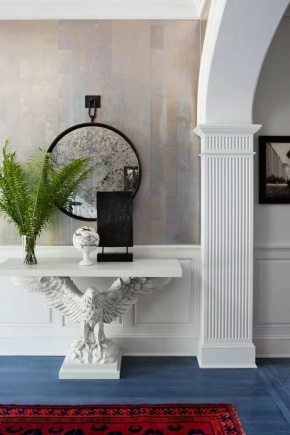
Those who are interested in a variety of interior "chips" will be interested to know what pilasters are, what they can be made of and in what style of the interior they should be placed. Actually, our today's material is devoted to this topic.

What it is?
Pilaster or pilaster (the Italian word pilastro, from the Latin pila - "column", "pillar") refers to decorative semi-columns built into the walls, and not standing separately, like classic, standard ones. They take up little space in the room, as they "protrude" from the wall by only a few centimeters. This interesting design element can most often be found in the classic interior design of an apartment, however, pilasters sometimes appear in more modern style trends.
The pilasters owe their appearance to ancient Greek architects. In those distant times, the elements were made of marble or granite and were used exclusively to decorate the facades of buildings. Inside the premises, they "got" in the era of classicism.
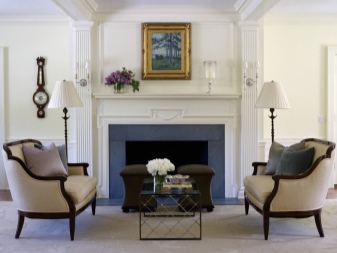
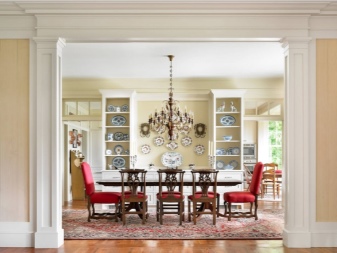
Pilaster components.
- Base - located below, the whole structure stands on it. The optimal size is 10-50 cm.
- Pillar (trunk). The main part of the semi-column. Its length can be almost any - it is limited only by the distance from the floor to the ceiling of the room. The optimum width is 12-30 cm. The "body" of the pilaster can be smooth or carved.
- Small caps... Located at the very top of the structure. It is the most decorative part of the half-column - it is the capital that is usually decorated with carvings and various patterns. It has an external resemblance to stucco molding.
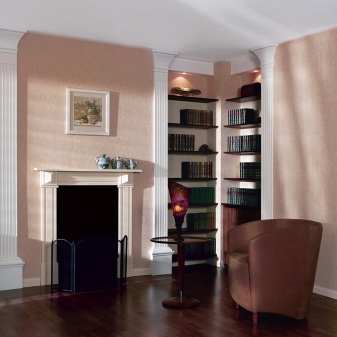
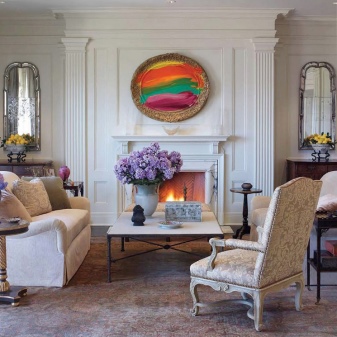
All these parts should form a single harmonious design - both in size and style. It is clear that pilasters are parts of a room's decor that are not of any practical use. However, they can be indispensable for:
- symmetrical design of portals by semi-columns;
- creating accents in the corners of the room;
- combining several levels of dwelling;
- separation of facades;
- zoning of the room.

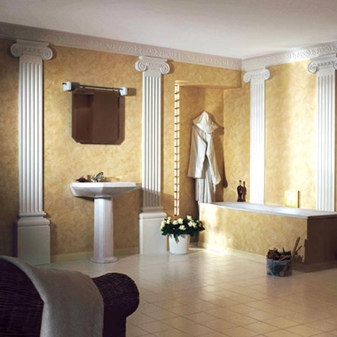
Good "friends" of pilasters:
- plaster molding;
- fireplaces;
- paintings;
- antique or antique-style furniture;
- heavy wrought iron chandeliers.
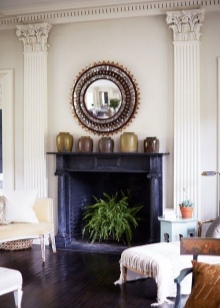
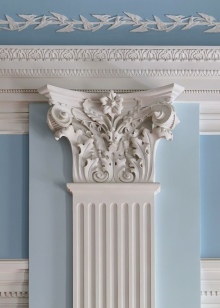
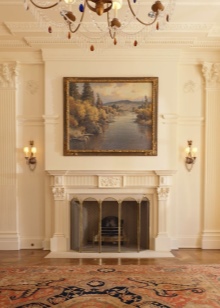
Materials (edit)
As mentioned above, in the era of the appearance of pilasters, the main materials for their manufacture were marble and granite. However, these days these raw materials will cost you a pretty penny, and since you are unlikely to want to spend a lot of money on, in general, non-functional decor element, you can opt for the following modern materials:
- stone;
- gypsum;
- polyurethane.
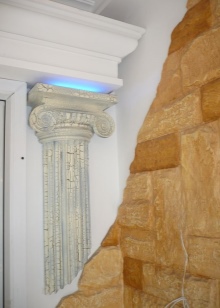
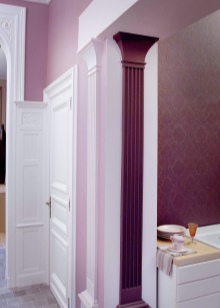
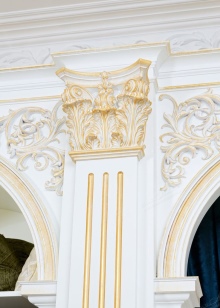
The best option from the proposed would be the latter, since its advantages are undeniable:
- the design will turn out to be light, but durable;
- polyurethane pilasters are easy to install, and you can purchase both a one-piece structure and individual parts and assemble them already on site;
- polyurethane products are not afraid of high humidity, so they can be installed even in bathrooms;
- the service life of structures is quite large;
- polyurethane pilasters can be painted, in addition, you can find products with a certain texture on sale, for example, wood or marble;
- polyurethane semi-columns look no worse than their more expensive "counterparts".
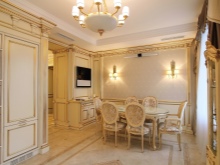
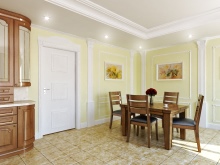

Styles
Now let's figure out in which interior style the use of pilasters will be appropriate. There are several of them.
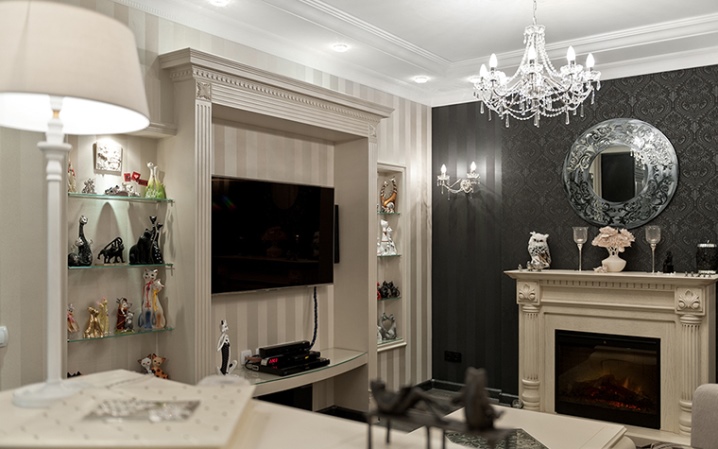
Classic
Well, of course, who would argue! Perhaps this is the very first style that you remember when you mention pilasters. In this direction, semi-columns are used to decorate walls, door and window openings (both semicircular and rectangular), design the main entrance to the room or a composition center.
With the help of pilasters in a classic interior, zoning and highlighting of specific objects are performed: a large antique cabinet, a picture, a fireplace.
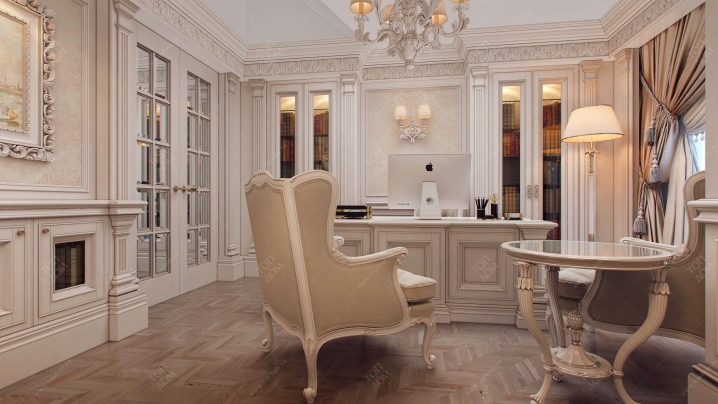
Neoclassic
A style very similar to the previous one, but more adapted to modern realities. In this case, the use of pilasters will be appropriate. combined with beautiful wallpaper, wall panels, decorative plaster, moldings.
Semi-columns can repeat the color of the walls, or, on the contrary, contrast with them, highlighting certain zones.
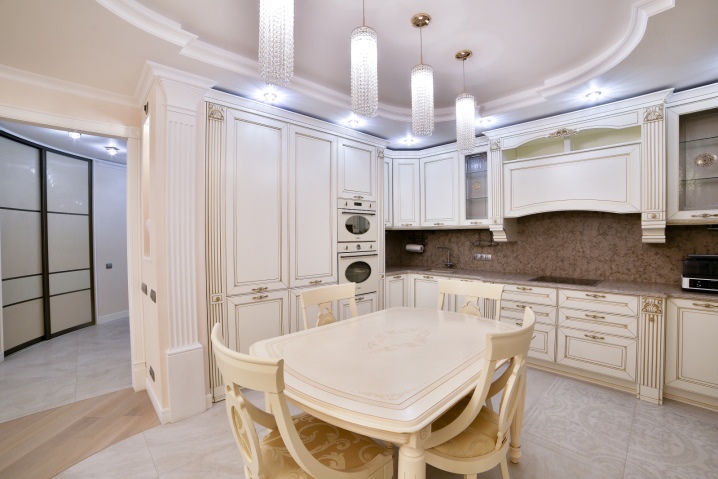
Modern style
Pilasters are not used very often here for the simple reason that they do not know how to combine them with other furnishings.... However, this is not so difficult: it is enough to mount simple-looking semi-columns without pretentious decor and decorate the doorway with them, uniting the living room with an entrance hall or a dining room with a kitchen, or highlight the fireplace area using a stylized portal.
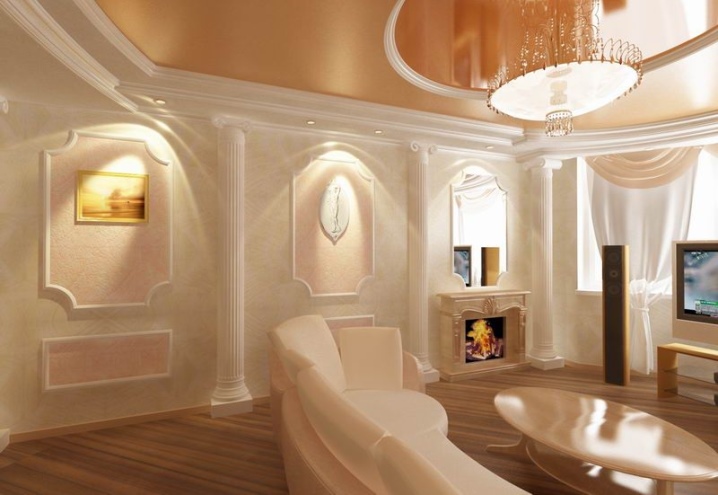
Eclecticism
A combination of dissimilar, dissimilar styles and ideas - that's what eclecticism is in the interior. That's why do not be afraid to "overload" it with pilasters - they will look very harmonious here. For example, it will be interesting to decorate a doorway with half-columns, installing vintage bookcases on either side of it, and thereby giving the room the appearance of a sort of old library.
In this case, a stucco molding on the ceiling or a ceiling border, repeating the pattern of pilasters, will be appropriate.
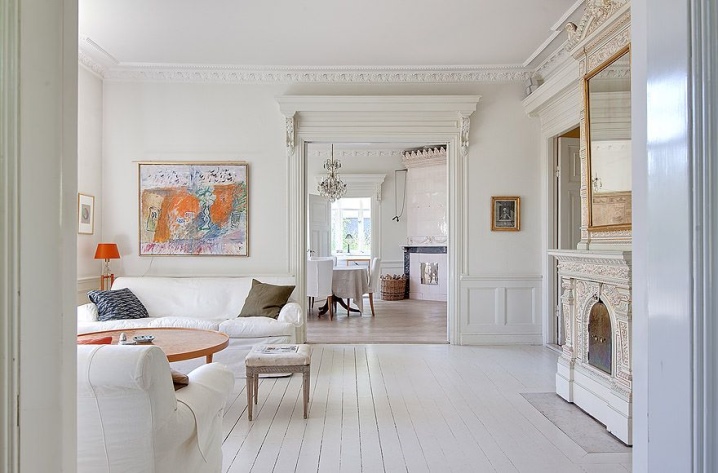
Where to locate?
Most often, half-columns are located in the following areas of the room.
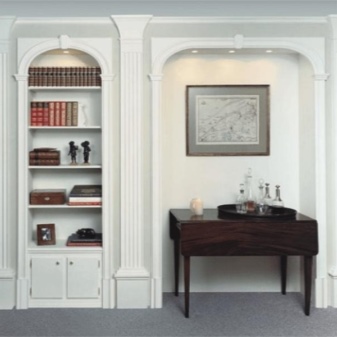
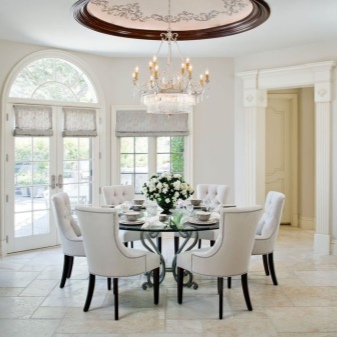
- In the living room. This can be a frame design for a fireplace portal or simply structures protruding from the walls and dividing the room into zones. Very often, it is in the living room that a TV is hung on the central wall - it can also be decorated with pilasters. By the way, they do not have to reach the ceiling - there is enough height to the middle of the wall.
And if the capital at the same time is of sufficient width, it will be possible to install various decorative elements on it: figurines, vases, flower pots, photo frames, etc.


- In the bedroom pilasters usually highlight the headboard area, a large wardrobe or chest of drawers. Also, with their help, you can focus on the dressing table, turning it into a real corner of beauty.
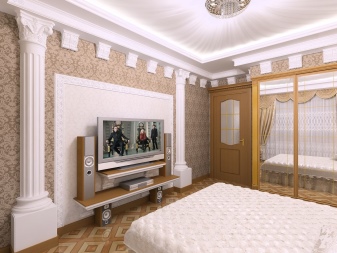

- Kitchen and dining room can be visually delineated using pilasters. It is enough to build between them a kind of arch of semi-columns, slightly "going" to the ceiling in a semicircle.
In this way, you can divide the cooking area and the eating area, even in a small room.

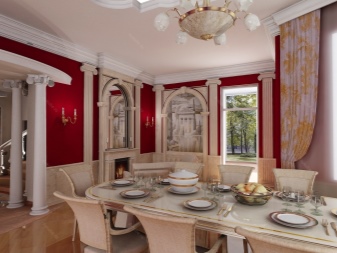
- In bathroom pilasters made of polyurethane, which is not afraid of high humidity, will be very appropriate. They can be used to decorate both the bath itself and to decorate the doorway with their help.
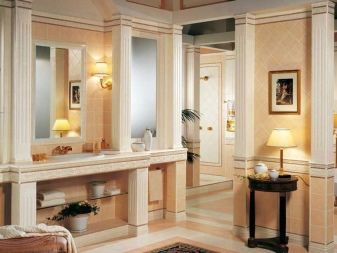

Beautiful examples
Now admire the beautiful photos and take notes of ideas.
- Here pilasters meet twice, "echoing" with each other: when decorating a fireplace portal and a TV viewing area.
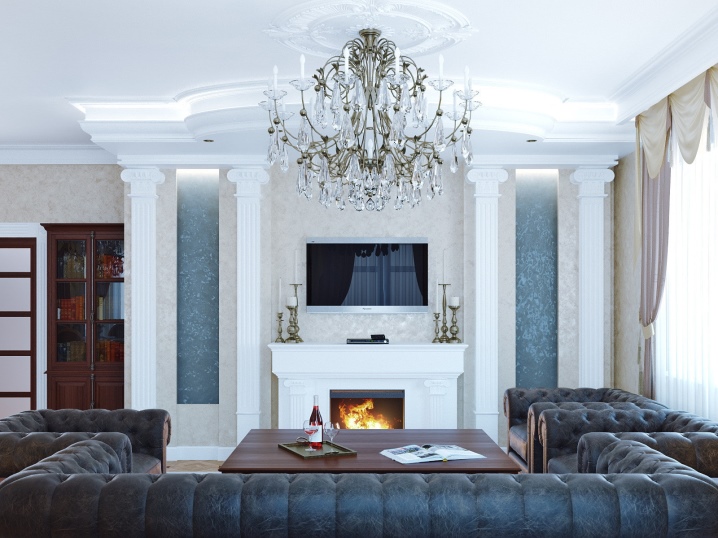
- Hall decoration with semi-columns. A great example of how pilasters fit into a classic interior.
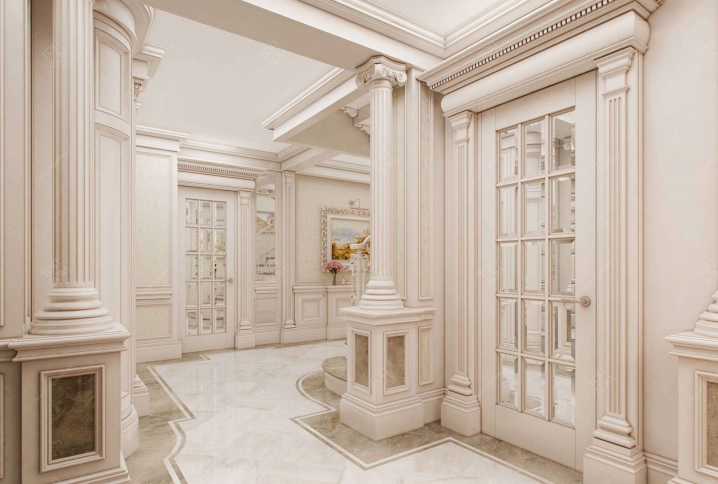
- Highlighting the headboard area in the bedroom. Gold and white pilasters echo the style of an antique chandelier, table lamps and vintage bedside tables.

- Luxurious bathroom, trimmed with semi-columns.
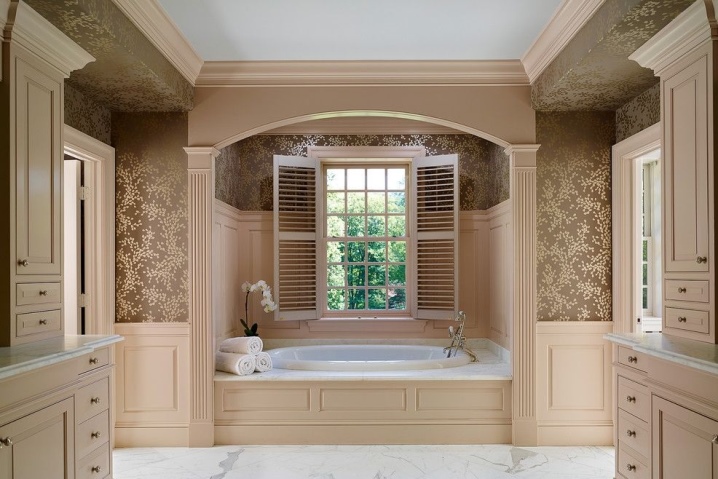
- Pilasters in the kitchen focus on the stove, why it becomes like an old stove.
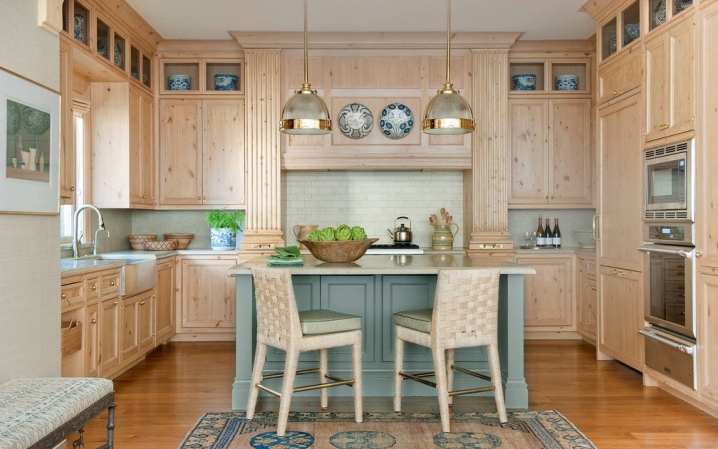
- Another example of using pilasters in the bathroom - mirror decoration.
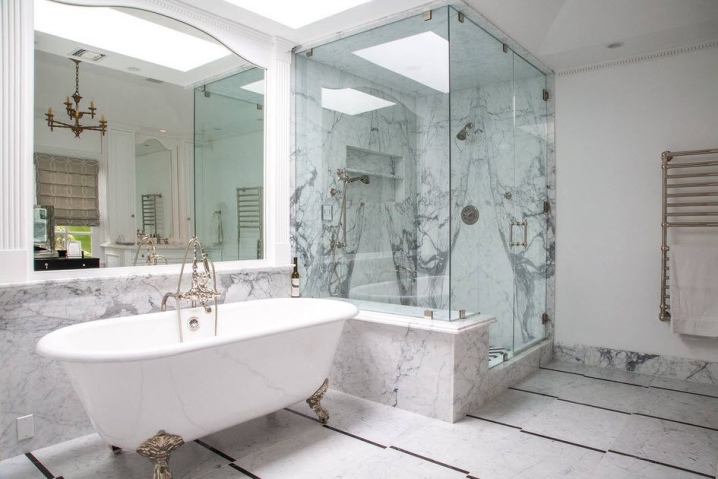
You can learn how to make gypsum pilasters with your own hands from the video below.













The comment was sent successfully.